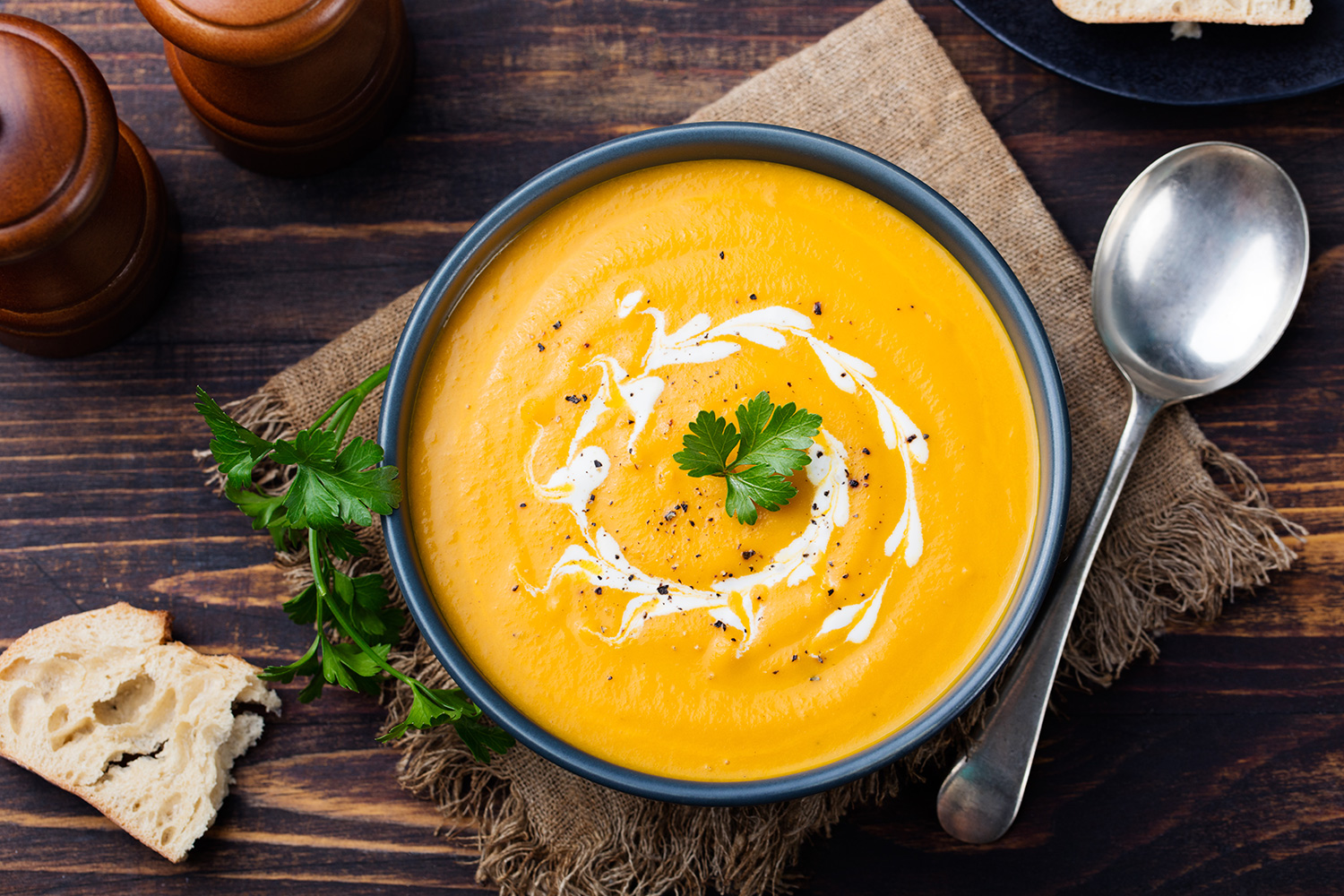
23 May How To Up Your Soup Game This Winter
Making soup can be as simple as veg + liquid + heat = done, but rarely will that equation equal a complex and layered soup you just can’t wait to dip your spoon into. Of course, there are tried and tested recipes to follow, but if you’re at the end of the day and just want to make do with what you’ve got, a great winter soup will help you do just that. And since zero waste in any and all areas of life’s resources is always your best case scenario, here are some simple tips to turn even those improv soups into delicious family dinners.
HEAT EQUALS FLAVOUR
This may sound counter-intuitive, but in order to get the best out of your soup, it helps to start off without liquid to caramelise some of the ingredients. Whatever it is you are making into soup, spend a few minutes with them in the bottom of a hot, heavy based, and preferably non-stick and non-toxic, pot and get a bit of colour onto them. Don’t burn anything, that will leave a bitter taste behind, but some brown, sticky bits are perfect for adding an extra layer of flavour, and only takes a couple of minutes.
There are, of course, exceptions to this:
- cauliflower soup should be a pure white, and caramelising introduces a brown element, so steer clear
- ditto if you’re looking for a clear, brothy soup, so be mindful of what you’re making
TEXTURE
Consider the texture of your final soup. Do you want it smooth, brothy, or chunky? Whatever you decide, use that to guide you on how carefully you cut up your veggies. If I know that I’ll be blending my soup, I’m not too careful about how uniform I chop the veggies into, but if I’m leaving it chunky, I want to make sure there’s still some texture left, and I want everything to be cooked properly. In other words, if you are blending, you can technically overcook whatever size the veg was cut into, but if not, be more considerate when cutting things up and aim for a uniform cubes or rounds, where possible, to ensure even cooking (and no over- or under-cooking). Use a decent knife so you have cleanly cut veg, not hacked and sawed, stringy ensembles.
COLOUR
They say we eat with our eyes first, and that’s especially true when it comes to things like soup. Consider broccoli soup. It’s delicious and nutritious, but if you cook it until the broccoli is far overdone, you’ll get a greyish mass at the end, that will probably taste edible, but look extremely unappetising. This is especially true for green veggies – cauliflower doesn’t change at all – so be careful to cook those green with a measure of delicacy – enough to be soft when blended, but not too much that they lose their appeal.
CONTRASTING ADD-INS
If you’re planning to blitz your soup smooth at the end, consider a contrasting texture to add interest. You could quickly toast up a few seeds or nuts, or make crunchy croutons with some leftover bread.
Toasted pumpkin seeds taste delicious in tomato based soups (and hearing them pop and snap is all too much fun)
Toasted sunflower seeds are so complementary for green soups
Toasted almond slivers and cauliflower are a magic combo
Making a spicy soup? Dollop a bit of yoghurt or coconut cream on top before you serve, for a cool, creamy contrast to the hot, spicy soup. A full bowl of the same texture, no matter how delicious, can get a bit monotonous, so think about quick things you can add to change things up a bit (this is also a golden tip for sprucing up store-bought soup).
And don’t forget, if you add in nutritional yeast, you get a lovely cheesy flavour and hemp seeds for extra nutrition and nutty, creamy goodness!
STOCK > WATER
Yes, you can use water to cook your soup, and it will likely be delicious, but if you have the time to make your own stock, you can take your soup from nice to incredible in one easy step. Stock becomes especially important in brothy soups (less so for chunky or blended soups, but still wonderful to have). This is a quick 10 minute veggie stock that you can make while you prep for the rest of your soup, and is a wonderful back-pocket recipe to have. If you can’t be bothered, the Massels veggie, chicken style and beef style stocks also add wonderful, healthy flavour.
And don’t forget, if you’re making the soup ahead of time and want to keep it toasty without continued cooking, a Wonderbag is an absolute must. You can even start cooking on the stove and transfer to the bag for extended slow cooking without any electricity. And with potential load shedding – that’s always a win-win.
These 5 tips should help to improve your soup game this winter. What secrets do you have for getting the most out of your winter soup?



Jurgen
Posted at 12:09h, 31 MayI am always pleased when I have stale sourdough bread left over. It makes the best croutons. Splash of olive oil, a sprinkle of salt, into a low oven at the start of cooking your soup….voila! Delish crunch on top.
It’s a mission, but I almost exclusively buy whole chicken nowadays so that I can use the carcass for stock. A little bouquet garni from the garden, diced carrot onion and celery and the stock can make just about any dish better.
Having fresh parsley and chives in the garden (planted close to the kitchen) has also become an important part of keeping cost, waste down while being able to top off 101 dishes.